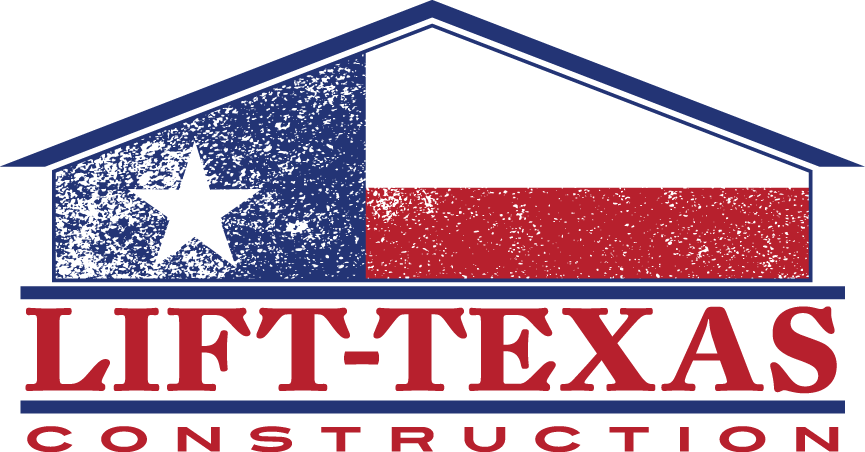Your home’s foundation is critical for its stability and safety. Issues with the foundation can lead to serious problems if left unaddressed. In Texas, the unique soil conditions and weather patterns make homes particularly susceptible to foundation issues. Learning to spot the signs early can save you time, money, and stress.
Foundation problems can manifest in various ways, both inside and outside your home. You might notice cracks in the walls, doors that won’t close properly, or uneven floors. These symptoms can be subtle at first, but they often become more severe over time. It’s essential to understand what to look for so you can address any issues before they escalate.
In this article, we’ll guide you through the visible signs of foundation problems, what to look for inside your home, and the potential causes behind these issues. We’ll also provide steps on what to do if you suspect your foundation needs attention. Recognizing and solving these problems early can help keep your home safe and secure.
Visible Signs of Foundation Problems
Recognizing the visible signs of foundation problems early can help you take preventive measures. Here are some common exterior indicators that your foundation might be in trouble.
Cracks in the Foundation: One of the most obvious signs is cracks in the foundation itself. These cracks can be vertical, horizontal, or diagonal. Small hairline cracks are common and may not be an issue, but larger, zigzagging cracks can indicate shifting or settling of the foundation.
Gaps Around Windows and Doors: If you notice gaps around your exterior windows and doors, this could be a sign of foundation movement. These gaps usually mean that the foundation is shifting, causing the structure to pull away from its original position.
Uneven or Sinking Outdoor Surfaces: A sinking driveway, patio, or other outdoor surface can indicate foundation issues. If the ground around your home is settling unevenly, it can cause the concrete to crack and sink, leading to a hazardous and unsightly problem.
Tilting or Leaning Chimney: A chimney that is tilting away from your house is a serious indicator of foundation problems. The added weight of the chimney can cause more pressure on a weakened foundation, leading to further issues.
Identifying these visible signs can alert you to potential foundation problems that may need addressing. Always consider these indicators seriously to avoid more extensive damage down the line.
Checking for Interior Clues
Foundation problems don’t just show up outside; they can also reveal themselves inside your home. Here are some interior clues that your foundation may need attention.
Cracks in Walls and Ceilings: Take a look at your walls and ceilings, especially in corners and around windows and doors. Cracks in drywall or plaster can indicate foundation movement. Pay special attention to large cracks, stair-step cracks, or cracks that run diagonally, as these can be more serious.
Sticky Doors and Windows: If your doors and windows suddenly become hard to open or close, this could be a sign of foundation issues. As the foundation shifts, it can cause frames to become misaligned, making it difficult for doors and windows to function properly.
Uneven Floors: Walk through your home and look for areas where the floor feels uneven or slopes noticeably. Use a level tool to check if the floors are level. Uneven floors can signal that the foundation is settling unevenly.
Bowed or Bulging Walls: Walls that appear bowed or bulging outwards can be alarming signs of foundation issues. This can happen due to the pressure building up outside or beneath the foundation, pushing the walls inwards or outwards.
By keeping an eye out for these interior clues, you can catch foundation problems early and take action before they worsen. Knowing what to look for inside your home helps you maintain its structural integrity.
Understanding the Causes of Foundation Issues
Foundation issues arise due to various causes, and understanding these can help you prevent or address them effectively. One common cause is soil movement. When the soil beneath your foundation expands or contracts due to moisture changes, it can cause your foundation to shift. This can happen after heavy rain or prolonged drought.
Another cause is poor construction. If the foundation wasn’t built on a properly compacted layer of soil, or if the materials used were subpar, it’s more likely to experience issues. Likewise, large trees planted too close to the house can be problematic. Their roots can grow under the foundation, causing it to crack or shift.
Water damage is another major culprit. Poor drainage around your home can allow water to pool near the foundation, which can lead to erosion and weakening of the structure. Plumbing leaks under a house can also result in similar problems over time.
Understanding these causes can help guide you in either taking preventative measures or addressing existing problems efficiently.
Steps to Take If You Suspect Foundation Problems
If you suspect foundation problems, taking immediate steps can prevent further damage and costly repairs. Here are some actionable steps you can follow:
Conduct a Visual Inspection: Start by looking for visible signs around your home. Check for cracks in the foundation, walls, and floors. Look for doors and windows that don’t open or close properly, indicating possible foundation shifts.
Monitor Problem Areas: If you notice cracks or gaps, monitor them over weeks or months to see if they’re growing. Use a tape measure to track any changes and keep notes for reference.
Seek Professional Assessment: If you see signs of foundation issues, consult experts. Professionals can accurately assess the problem and recommend the best course of action for repairs.
Get Multiple Opinions: Don’t rely on just one opinion or estimate. Contact several companies to get a thorough assessment and compare their recommendations and costs.
Plan for Repairs: Once you understand the severity of the problem, decide how you’ll address it. Whether it’s minor fixes or extensive repairs, having a clear plan helps you move forward.
Taking these steps promptly can save you time, money, and stress, ensuring your home’s foundation remains solid and secure.
Final Thoughts
Foundation issues can be daunting, but understanding the causes and knowing how to spot the signs can make a big difference. By recognizing the problems early and taking the right steps, you can protect your home from further damage.
No one wants to deal with foundation problems, but being informed and proactive helps. From conducting a thorough visual inspection to seeking professional advice, each step you take brings you closer to a safe and secure home environment.
If you suspect foundation issues or need expert help, Lift-Texas Construction is here to provide reliable solutions. Our skilled team can assess your situation and offer the best foundation repair options, ensuring your home remains stable for years to come. Contact Lift-Texas Construction today to keep your home solid and safe!

